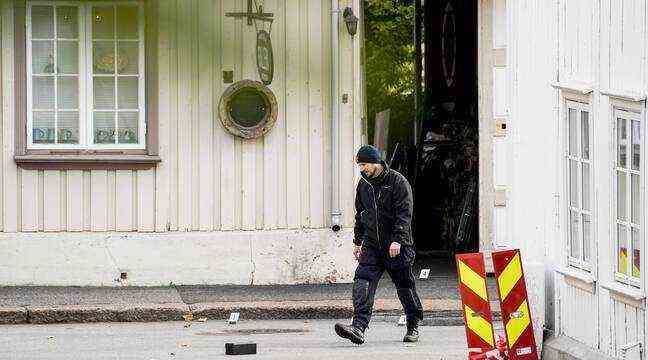Does the author of the archery attack in Norway have a mental illness? In any case, this is the thesis towards which the investigators are heading on the third day of the investigation into this tragedy which has grieved the country. “The hypothesis which has been most reinforced after the first days of the investigation is that of the disease as a backdrop,” Inspector Per Thomas Omholt told a press conference. “But we are leaving the door open to other hypotheses.”
Among the theories of departure, the police had considered “anger, revenge, an impulse, jihad, disease and provocation”, explained the policeman. These statements reinforce the doubts surrounding the mental health, and therefore the criminal responsibility, of Espen Andersen Bråthen who admitted having killed five people and injured three others on Wednesdays in Kongsberg (south-east) where he resides.
Placed for the time being in a medical institution
Suspected of Islamist radicalization, this 37-year-old Dane was placed in pre-trial detention for four weeks on Friday, the first two in total isolation. Rather than in prison, he will be kept in a medical institution, said prosecutor Ann Iren Svane Mathiassen. Bråthen was transferred Thursday evening to a mental institution following, explained Ms. Svane Mathiassen, “of an assessment of his state of health”. He is undergoing a psychiatric assessment by experts to determine whether he can be held criminally responsible for his actions. The conclusions are expected to take several months.
If the attacks bear, they say, the mark of a “terrorist act”, the authorities now seem to lean towards the hypothesis of madness. “There is no doubt that the act itself apparently suggests that it may be a terrorist act, but it is now important that the investigation progress and that the motivations of the suspect be clarified. PST security chief Hans Sverre Sjøvold said Thursday. “This is a person who has been going back and forth in the health system for a while,” he said, without further details.
“Fears linked to radicalization” since 2020
The suspect “is known” to the PST, which is particularly responsible for counterterrorism in Norway, but few details have been provided. Police reported “radicalization fears” dating back to 2020 and earlier, which they said were followed up. According to Norwegian media, Bråthen has been targeted by two court rulings in the past: a ban last year from visiting his parents after threatening to kill his father and a conviction for burglary and buying hash in 2012. A video of him dating back to 2017 has also come to light, where he utters a profession of faith in a threatening tone.
Bråthen, who most likely acted alone according to the police, killed four women and a man, aged between 50 and 70, in several places in Kongsberg, a small town without a history of about 25,000 inhabitants, some 80 kilometers away. west of Oslo.
“Never a smile, no expression on the face”
The new Norwegian Prime Minister Jonas Gahr Støre is expected during the day in this still shocked city. Flowers and candles were placed at the multiple crime sites. Svein Westad, a 75-year-old retiree, wanders through Hyttegata, a street where two of his neighbors and friends were killed in their homes. “I am totally devastated. I’ll never get over it, ”he said. “They should have caught him immediately,” he adds, referring to the police, criticized for having taken more than half an hour after the first alerts to arrest Bråthen. On condition of anonymity, a neighbor described Bråthen as an unfriendly person. “Never a smile, no expression on his face” and “always alone,” he said.
Several planned Islamist attacks have been foiled in Norway in the past. But the country has been bereaved by two far-right attacks in the past decade, notably committed by Anders Behring Breivik (77 killed) on July 22, 2011.

